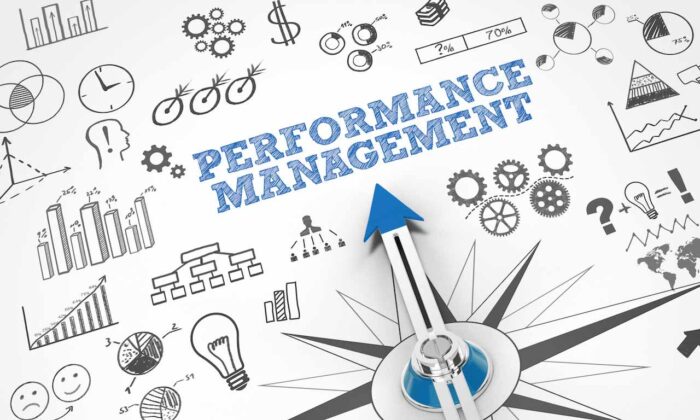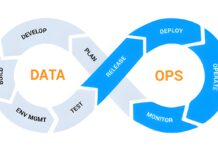
In today’s rapidly evolving business landscape, organizations are constantly seeking ways to stay ahead of the competition and achieve sustainable success.
One of the critical pillars of achieving organizational excellence is a robust performance management process.
This process encompasses various elements, with the employee monitoring process playing a central role in evaluating, measuring, and enhancing workforce productivity. Here we will delve into the key aspects of performance management, emphasizing its significance, and explore various strategies to optimize the employee monitoring process for improved organizational performance and growth.
What is Performance Management?
At its core, performance management is a systematic approach that empowers organizations to monitor, assess, and improve the performance of their employees. It involves setting clear performance expectations, providing timely feedback, identifying skill gaps, and establishing development plans. A well-designed performance management system fosters a culture of continuous improvement and encourages employees to strive for excellence in their roles.
Key Elements of a Performance Management Process

a. Goal Setting and Performance Expectations
The foundation of an effective performance management process lies in establishing clear and well-defined performance goals. These goals must align with the organization’s strategic objectives and be SMART (Specific, Measurable, Achievable, Relevant, and Time-bound). When employees understand what is expected of them and how their individual contributions contribute to broader organizational goals, they are more motivated to excel. Goal setting is a critical step in the process. It ensures alignment and clarity for all team members. Aligning individual and organizational goals leads to success.
b. Regular Performance Reviews
Regular performance reviews are the backbone of the employee monitoring process. Conducted at predetermined intervals, these reviews provide an opportunity for managers and employees to discuss progress toward established goals, address challenges, and acknowledge achievements. Through constructive feedback, employees can gain insights into their performance, understand areas for improvement, and develop action plans for growth. Regular reviews foster continuous improvement. They are essential for maintaining alignment and motivation. Performance reviews are vital for employee growth.
c. Feedback and Coaching
Constructive feedback is a powerful tool for employee growth and development. Regular feedback sessions create an open and transparent communication channel between managers and employees, fostering trust and reinforcing the importance of continuous improvement. Coaching sessions allow managers to provide personalized support and guidance to help employees reach their full potential. Feedback is essential for growth. Coaching helps employees overcome challenges. Open communication builds trust and fosters development.
d. Employee Development
A successful performance management process prioritizes employee development as a strategic initiative. Identifying skill gaps and offering relevant training opportunities not only enhances employee capabilities but also demonstrates the organization’s commitment to its workforce’s professional growth and advancement. Development is key to long-term success. Investing in employees pays dividends in performance. Employee development is a strategic investment.
Significance of the Employee Monitoring Process

Performance Accountability
The employee monitoring process instills a sense of accountability among employees. When employees are aware that their performance is being closely monitored and assessed, they are more likely to take ownership of their work and deliver their best efforts consistently. Accountability drives excellence. Monitoring ensures responsibility and focus. Performance accountability leads to higher standards.
Identifying High Performers and Areas for Improvement
Consistent monitoring enables organizations to identify high-performing employees and acknowledge their contributions appropriately. Similarly, it allows managers to recognize areas where employees may be facing challenges or struggling to meet expectations, enabling targeted support and improvement plans. Identifying strengths and weaknesses is crucial. Targeted support enhances overall performance. Recognizing high performers motivates the entire team.
Enhancing Employee Engagement
Regular performance evaluations and feedback demonstrate to employees that their efforts are valued and recognized. This appreciation fosters a positive work environment and increases employee engagement and commitment to their roles and the organization’s mission. Engagement leads to higher job satisfaction. A positive work environment fosters collaboration. Recognizing efforts builds loyalty and commitment.
Aligning Performance with Organizational Goals
An effective employee monitoring process ensures that individual and team performance aligns with the organization’s overarching objectives. This alignment helps create a cohesive and focused workforce, working together towards shared goals. Alignment with organizational goals drives success. A cohesive workforce enhances productivity. Shared goals foster a sense of purpose and direction.
Strategies to Optimize Employee Monitoring Process
Utilize Technology for Efficient Tracking
Incorporating performance management software like Controlio can streamline the employee monitoring process, making it more efficient and accurate. Controlio is an advanced web-based cloud system for employee monitoring. Unlike traditional keyloggers, it uses a smart technology called “Keystroke Analysis,” respecting employees’ privacy while improving productivity and reducing stress. These tools allow for real-time data collection, automated reminders, and in-depth performance analytics, simplifying the evaluation process for managers and HR teams.
Implement 360-Degree Feedback
Introducing a 360-degree feedback mechanism enables employees to receive input from multiple sources, including peers, subordinates, and supervisors. This holistic approach provides a comprehensive view of an employee’s performance and behavior, leading to well-rounded and targeted development plans.
Set Realistic and Challenging Goals
Performance goals should strike a balance between being achievable and challenging. Unrealistic goals may lead to demotivation, while easily attainable goals might not push employees to excel. Finding the right balance encourages employees to stretch their capabilities and contribute more effectively to the organization’s success.
Encourage Ongoing Communication
Open and transparent communication is vital in a performance management process. Encourage employees to discuss their progress, challenges, and aspirations with their managers regularly. This fosters trust and enables timely course corrections if required, preventing potential issues from escalating.

Conclusion
A well-executed performance management process, supported by a robust employee monitoring process, holds the key to unlocking an organization’s full potential. By setting clear goals, providing regular feedback, and fostering a culture of continuous improvement, organizations can enhance employee performance and foster a motivated and engaged workforce. Embrace the strategies outlined in this comprehensive guide to optimize your performance management process and pave the way for long-term success. Remember, the employee monitoring process is not just about evaluating performance but also about nurturing talent and building a stronger, more successful organization.
















